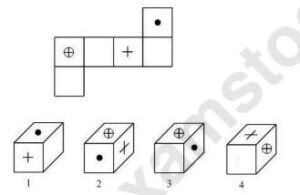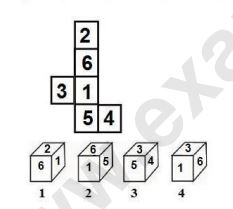Welcome to your Reasoning Mock Test (In English)
5.
Six friend are sitting in a circle facing the centre. Sumit sits second to the right of Amit. Karan is an immediate neighbour of Param. Tony sits third to the right of Amit. Dharam is an immediate neighbour of Amit and Sumit. Karan sits second to the right of Sumit.
Who sits fourth to the right of Param?
6.
Read the given statements and conclusions carefully. Assuming that the information given in the statements is true, even if it appears to be at variance with commonly known facts, decide which of the given conclusions (s) logically follow (s) from the statements.
Statements:
All dolls are robots.
Some robots are toys.
Some toys are cycles.
Conclusions:
(I) Some toys are dolls.
(II) No cycle is a robot.
10.
Daisy starts walking from her house and goes 20 m west. From there she turns right and walks a certain distance called P m. Then she turns right and walks 30 m. She turns right again and walks 40 m. After that, she takes a final right turn and walks 10 m. If Daisy’s current position is 5 m south of her home, then what is the value of P?
11.
Six characters A, B, C, 1, 2 and 3 are written on different face of a dice. Two positions of this dice are shown in the figure. Find the character on the face opposite to C.
12.
If the given sheet is folded to from a cube, which of the given figures are possible?
(The elements are shown to indicate the sides only)

13.
Read the given statements and conclusions carefully. Assuming that the information given in the statements is true, even if it appears to be at variance with commonly known facts, decide which of the given conclusions logically follow from the statements.
Statements:
All papers are pencils.
All pencils are erasers.
All erasers are pens.
Conclusions:
I. All pens are papers.
II. Some papers are erasers.
III. Some pens are pencils.
19.
Read the given statements and conclusions carefully. Assuming that the information given in the statements is true, even if it appears to be at variance with commonly known facts, decide which of the given conclusions logically follow(s) from the statements.
Statements:
1) All mats are sheets.
2) No sheet is a paper.
3) Some papers are notebooks.
Conclusions:
I. No mat is a paper.
II. Some sheets are notebooks.
21.
In a certain code language,
A + B means ‘A is the husband of B’,
A − B means ‘B is the mother of A’,
A \(\times\) B means ‘B is the sister of A’ and
A \(\div\) B means ‘A is the daughter of B’.
Based on the above, how is Q related to T if ‘P + Q \(\times\) R − S \(\div\) T’?
23.
If the given sheet is folded to form a cube, which of the given figure is/are possible?
(The numbers are shown to indicate the sides only.)

Leave a Reply